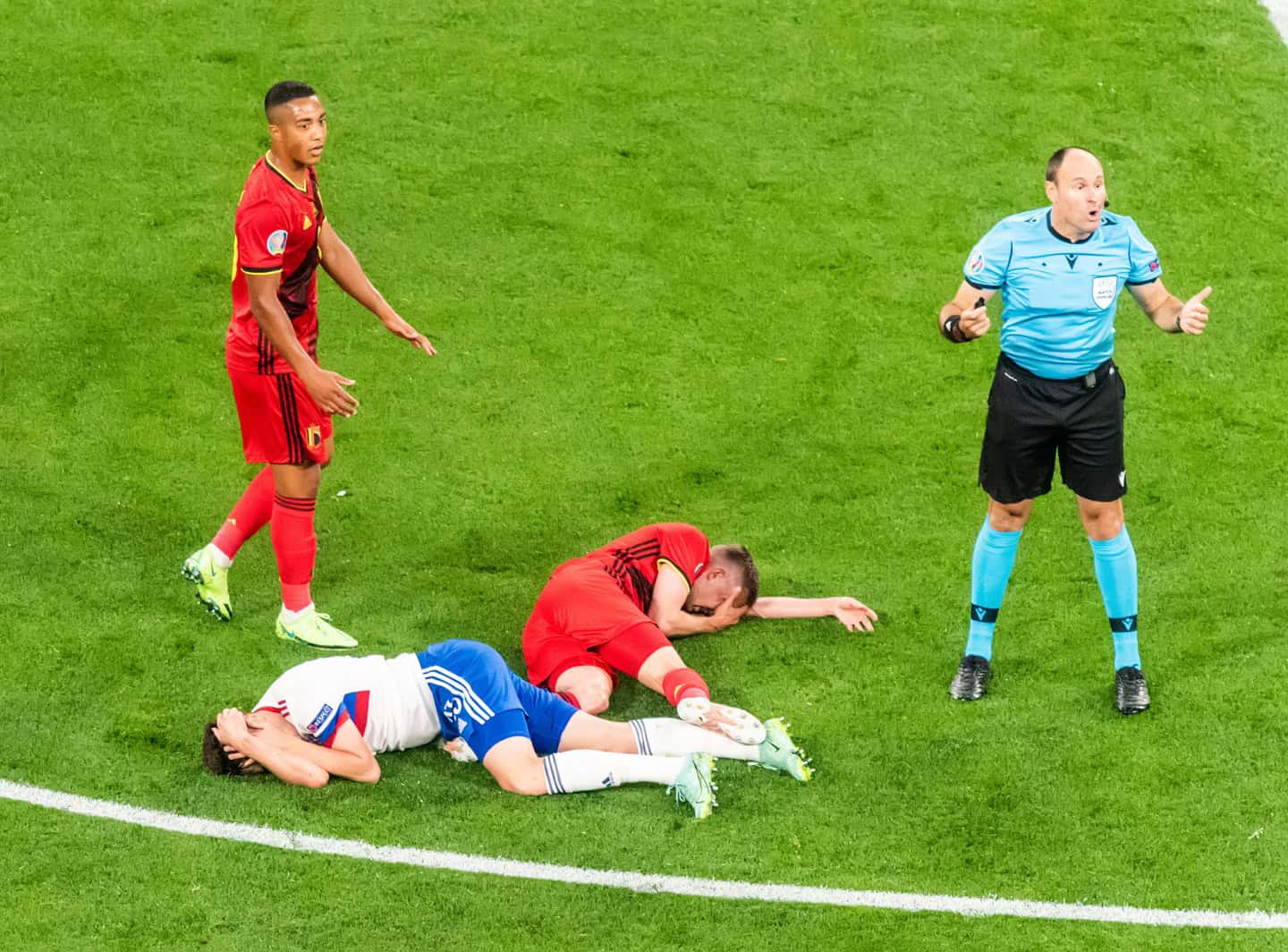
Head Injury Management at the Euros: All Talk, No Walk
For those of us in England, the Euros was a brilliant, nail-biting and classically bitter-sweet event. Aside from the result, the tournament also provided an incredibly candid snapshot into where the sport is in terms of its management of brain injury. So what exactly did it reveal? That football’s position remains as confusing and deficient as ever.
Before the start of the tournament, UEFA proudly proclaimed that all 24 teams participating had signed on to the Concussion Charter, aimed at recognising concussion and “how it should be managed from the time of injury through safe return to football”. The Charter set out that:
- All players had to undergo a neurological baseline test, the results of which could then be used as a comparison if a concussion was suspected or confirmed, to help facilitate a safer return to play
- A medical review system would be provided, allowing team doctors to consider potential head injuries with the benefit of different camera angles and slow-motion functions
- Players and staff would be provided with an education session on UEFA’s concussion awareness campaign
- In the event of any head injury and/or suspected concussion, the player would not be able to return to train or play until the team doctor had notified UEFA in writing that he was fit to do so, and that all steps of the Graduated Return to Play Protocol had been completed
According to the Concussion Charter, a formal diagnosis of concussion was not required for a player to be removed from the pitch, as it noted that “…if a player of our team is suspected of having suffered a concussion, he will be immediately removed from the pitch, whether in training or match play.”
This looked like a promising start, although it was interesting that concussion substitutions were not featured and there was also no use of an independent medical doctor to assess injuries.
So what actually happened? Well, I’m still confused about that part. There were some very controversial decisions made, some of which I’ve noted below:
France’s Benjamin Pavard collided with Germany’s Robin Gosens, and collapsed on his face, seemingly unconscious. He was assessed by his medical team but allowed to play on. He later admitted to being “knocked out for ten, 15 seconds”
- Austrian midfielder Christoph Baumgartner clashed heads with Ukraine’s Illya Zabarnyi. He seemed to be disoriented and was seen holding his head, but remained on the pitch. He was eventually substituted later, and walked off the pitch holding his head. Worrying statements came from both the team coach, Franco Foda, and Baumgartner himself after their team’s victory. Foda admitted that “[Baumgartner] had some problems before he scored the goal but luckily, he stayed on the pitch, scored the goal. After that, he felt dizzy and we just decided to take him off the pitch.” Baumgartner was pleased about the result, but still complaining of symptoms following the match, stating, “I can’t quite comprehend it all, my head is really hurting.”
- French goalkeeper Hugo Lloris’s hand collided with Danilo Pereira’s jaw, leaving the Portugese midfielder to collapse to the ground, with his eyes spinning in his head. Despite the worrying scenes, he remained on the pitch before being withdrawn later in the game. In a shocking, and perplexing, turn of events, UEFA later admitted that Danilo had suffered “a mild head trauma” and that the immediate assessment did not trigger red flags but that he suffered discomfort at half-time and was substituted as a precaution.
The above examples alone show that the head injuries were not properly managed at The Euros. There were so many inconsistencies between The Concussion Charter guidance and the actions actually undertaken, it’s difficult to understand how things went so badly wrong. We seem to be back to square one.
We can’t forget that a concussion is a brain injury, and having one concussion puts you at greater risk of further head trauma. UEFA’s own rules are that even a suspicion of concussion would require the player to be removed from the field, but this seems to have been ignored at the tournament.
A concussion usually can’t be diagnosed within seconds, and symptoms vary, so it’s frustrating seeing players like Pavard and Danilo being allowed to play on when they’re showing such obvious signs of likely head injury. There’s really no excuse for temporary concussion substitutions not being implemented.
Had the Charter been followed properly, these players should have been removed from play to be thoroughly assessed. They would then not be able to return for a minimum of 6 days and only with the written confirmation from the team doctor that he was fine to play.
Head injury management at the Euros was, sadly, abysmal. Despite UEFA’s grand promises of prioritising player safety, it’s difficult not to think this may have just been lip service.










